Affiliate marketing can be a lucrative business model, and many new affiliates are drawn to it because it sounds fairly easy to just send traffic to a landing page and then onto a sales page!
But here’s the thing: although affiliate marketing is not a difficult concept to understand, actually succeeding at the business model is a little trickier. One of the reasons is because affiliates don’t understand grasp how to provide a smooth journey for potential buyers.
Although most successful affiliates send traffic to a landing page before a seller’s sales page, there are many different types of landing pages. You might have heard of terms like bridge pages, pre-sell pages, squeeze pages, sales pages, pitch pages, and sales funnels. It can all get very confusing for beginners!
Fortunately, we’re here to clear it all up. By the end of this guide, you’ll know everything you need to know about landing pages for affiliate marketing!
Do You Need a Landing Page?
One of the most frequently asked questions I get from new affiliates is if they need to send traffic to a landing page. Why not send traffic directly to a merchant’s sales page using an affiliate link? Why add an extra step to the process?
It’s a good question. And unless you understand the significance of landing pages in affiliate marketing, you might lack insight into setting up an effective landing page.
In principle, you do not always need a landing page. You can use your affiliate link to send traffic directly to the seller’s sales page. For example, many affiliates on Pinterest send traffic directly to the seller(s) they promote (although there’s debate about whether this is a good practice).
However, many platforms specifically do not allow affiliate links or have restrictions. Quora and Reddit, for example, do not allow users to post affiliate links as they view them as spam.
Plus, many people will not click on your affiliate links unless they feel you “deserve” to receive a commission if they buy through your link. Without a landing page of some kind, it’s typically impossible to provide any value to your visitors before you make the “ask” of them to buy what you’re promoting.
In addition, a landing page allows you to warm up cold traffic so they are more receptive to the seller’s product or service when they land on their sales page.
What Is a Landing Page for Affiliate Marketing?
We actually put out a video diving into landing pages step-by-step, which I encourage you to check out!
As far as the definition of a landing page, any page where a visitor lands is a landing page. It can be any page on your website or blog. And it can have any number of objectives.
However, a landing page for affiliate marketing typically only has one objective: entice your visitors to click on your affiliate link and buy a product or service that will earn you a commission payment.
The best way to understand a landing page in affiliate marketing is to see it as a bridge between a traffic source and a sales page you want your visitors to cross.
Not all your visitors will make it across the bridge. But an effective bridge page acts as a funnel where visitors enter on one side and exit on the other side with the least amount of leakage along the way.
Note that depending on your target audience, the product or service you are promoting, and how well your landing page can pre-sell it, a single visit to your landing page might not be sufficient. As a solution, many affiliates use landing pages to capture email addresses to retarget visitors and build an email list.
However, take care when sending emails, as the seller you are promoting might use email marketing to convert prospects into buyers. You may inadvertently sabotage the process by sending unnecessary emails.
It is worth keeping in mind that building an email list in your niche is always a good idea. Imagine building a relationship with hundreds or thousands of people in your target audience you can email at will to introduce a new product or service you know they will love. And you do not have to spend a dime on ads!
As previously mentioned, an effective bridge page acts as a funnel, steering your visitors in the direction you want them to go.
The two main types of affiliate marketing sales funnels that many successful affiliates use are the advertorial sales funnel and the lead magnet sales funnel:
- Advertorial sales funnel – proven to convert with health and fitness or other high-margin products by mimicking news articles in the pre-sale phase of the buyer journey.
- Lead magnet sales funnel – Converts very well for content creators allowing them to offer a free resource in exchange for an email address and then email and convert buyers through a series of email sequences.
Bridge Page vs. Landing Page
Many affiliates get confused about the difference between landing pages and bridge pages.
The easiest way to differentiate between them is to understand that not all landing pages are bridge pages… But ALL bridge pages function as landing pages!
In affiliate marketing, a landing page sits between a traffic source and an affiliate offer’s “pitch page,” essentially functioning as a bridge page.
For an in-depth overview of bridge pages, refer to my post on the ultimate guide to affiliate bridge pages.
7 Parts of an Affiliate Marketing Landing Page
Landing pages do not fit into a one-size-fits-all box. Depending on your target market and the offer you are promoting, your landing page can be in any of the following formats:
- A product review blog post.
- A pre-sell video.
- An invitation to your visitor to download a checklist, ebook, etc., in exchange for their name and email.
- A quiz.
- Etc.
Regardless of the format you choose, the most effective landing pages have the following seven characteristics:
#1. Simple design
A clean and simple design works best and looks more authentic than a flashy landing page full of bells and whistles. You want your visitors to quickly and easily digest the information on your landing page.
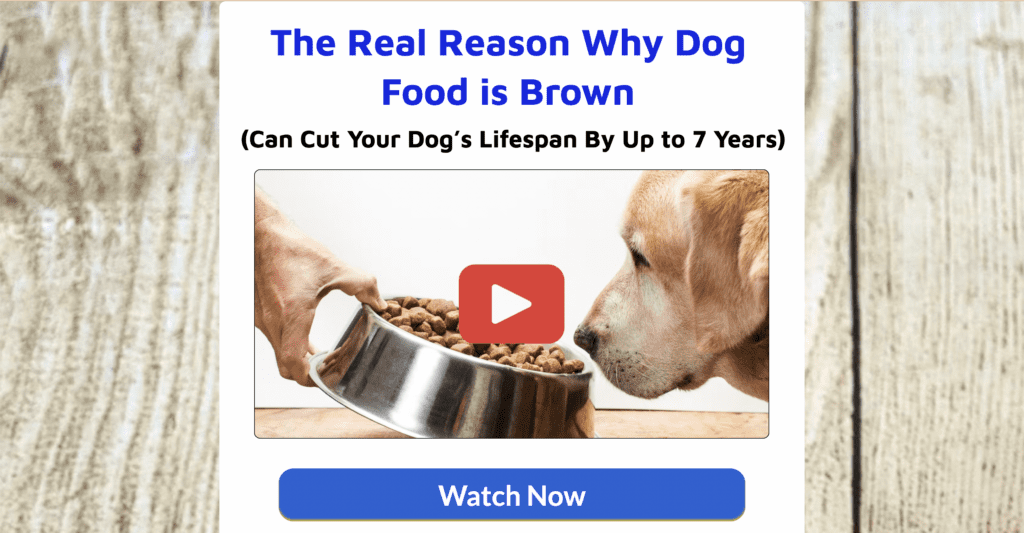
A busy design can distract your visitors and prevent them from reading your copy and taking action.
Design elements that can make or break your landing page include the following:
Responsive design
Responsive design refers to the ability of your page to adjust, fit, and look good on any screen, from laptops to tablets and phones.
Typography
The type and size of font you use should be easy to read on all devices. In addition, your font color should be either black or dark gray. Keep your text background white, but whatever you do, do not use a black background with white text – it strains the eyes and is difficult to read!
Color palette
Any colors on your landing page should complement your logo or appeal to your target audience. For example, pink might not be the best color choice if your target audience is predominantly men.
If you want to learn more about colors, ColourLovers.com is a good resource for web color trends.
#2. Follow the AIDA principle
AIDA stands for attention, interest, desire, and action.
Attention: Attention-grabbing headline with a strong hook
You only have a couple of seconds, at most, to grab a visitor’s attention. If your headline does not convey the right message, they will leave your landing page without reading your copy.
Crafting an attention-grabbing headline can be challenging if you are new to affiliate marketing. And it is not an exact science!
For example, many headline analyzers will score your headline and give tips on improving it. However, the score often varies significantly from one to the other. But they can help you craft better headlines.
The top headline analyzers include the following:
Interest: Expand on the headline and cover the pain point of the target audience
An attention-grabbing headline will not get you far unless you expand on it in your opening paragraph. Your visitor should feel confident that they have landed on the right page and that you understand their pain point.
Their pain point can be anything they want that will solve their problem. Try to identify with your target audience by being problem aware. Focus on the signs or symptoms of their problem, and show that you understand them and what they need or want.
Desire: Compelling benefits
Present the solution to the problem or pain point you have identified. The best way to accomplish this is by mentioning the benefits of the product you are promoting and how it will solve their problem or pain point.
Benefits should stand out from the text and be easy to spot if someone scrolls through your landing page. Where possible, use bullet points to highlight benefits.
Depending on the product or service, you might also want to include its features. However, do elaborate on how the features will benefit your visitor.
For example, product ABC contains ten videos (feature) on how to house train your puppy (benefit) to stop them from relieving themselves indoors (pain point).
If you do a good job instilling a desire for the product you are promoting, your visitor will already start looking for your affiliate link/button.
Action (Call to Action): Tell your visitor what to do next
If you do a good job instilling a desire for the product you’re promoting, your visitor will already start looking for your affiliate link/button or email subscription form.
However, do not assume your visitor will know what to do or will take the required action after reading through your copy. You have to tell them what to do next and make it easy for them by having a clear and direct call to action (CTA) on your landing page.
#3. Concise and compelling copy
Most people do not have the time or patience to read through thousands of words or listen to lengthy videos when searching for a solution to their problem.
The purpose of an affiliate marketing landing page or bridge page is not to get your visitor to read through thousands of words on your page and then again on the seller’s page.
Your goal is to provide visitors with helpful information and pre-sell the solution you are promoting so that when they land on the seller’s page, they are no longer cold prospects.
Your copy should be brief but comprehensive. It should cover the what, where, when, why, and how questions your visitor may have to make them receptive to the seller’s sales copy.
Example:
- What is the solution to my problem?
- Why is it the best solution for me?
- When do I need it?
- How does it work?
- Where can I get it?
#4. Engaging image(s)
“A picture is worth a thousand words” is an adage in multiple languages. But not only that, it can help you tell your story. However, any images you use should be highly relevant to your copy and the product you are promoting!
For example, an image of you holding or using the product you’re promoting adds to your credibility. You might also be given access to relevant images by the seller of the product as part of your affiliate tools.
Any stock images you might use should resonate with your visitors and illustrate a positive outcome.
For example, if you promote a digital dog training course, an image of a dog jumping up on a person does not convey the right message. However, an image of a dog who appears to be listening attentively to its owner might be a good fit.
#5. Affiliate marketing tracking link
Unless your only objective is to build your list and promote products through email marketing, use anchor text to link to the seller’s sales page. It looks much better than using a naked URL such as merchant.com/?af=abc.
Anchor text is the clickable text in a hyperlink that, when clicked, redirects you to an URL of your choosing.
Note that you are not limited to using text hyperlinks. You can use any visual element, such as a button or image, to link to the seller’s sales page. And your landing page can have more than one hyperlink, giving visitors more than one opportunity to click on your affiliate link.
Many affiliates choose to hide their affiliate links by using link shorteners such as tinyurl.com and bitly.com, using a forwarding domain, or masking their tracking link.
NOTE: At ClickBank, we do not generally recommend link shorteners or masking affiliate links – doing so might compromise our ability to track your affiliate links.
However, if you use a link shortener or forwarding domain, test your links regularly to ensure they work. And refer to your ClickBank sales analytics to ensure clicks reflect correctly!
#6. Full optimization
Affiliate landing pages typically obtain traffic in three ways:
- Free organic traffic from search engines.
- Free traffic from social media platforms.
- Paid ads (fastest way to drive traffic to your landing page).
Optimizing a landing page, such as a blog post, to attract organic traffic from Google is different from optimizing a landing page for traffic from paid ads.
In the case of Google, your page (and overall blog or website) should be optimized for SEO – and it can take many months to rank in the organic search results. Paid ads can deliver traffic from day one. But that doesn’t mean you don’t have optimizing to do!
For example, Google uses a quality score to inform you how well your ad quality compares to other advertisers.
It is calculated based on the combined performance of 3 components:
- Expected clickthrough rate (CTR): The likelihood of someone clicking your ad.
- Ad relevance: How closely your ad matches the intent behind a user’s search.
- Landing page experience: How relevant and useful your landing page is to people who click your ad.
Google shares the following best practices to help advertisers update their landing pages:
- Give people what they are looking for.
- Keep messaging consistent from the ad to the landing page.
- Try using conversion rate as a proxy for a good landing page experience.
- Make your website mobile friendly.
- Improve loading speed.
A study by Unbounce found that nearly 70% of consumers admit that page speed influences their likelihood to buy.
In addition to the above, even if you use paid ads, Google wants you to try to provide helpful and unique content on your landing page:
“Try to provide useful, original information on your landing page about whatever you are advertising. Be clear about your product or service and what it does.”
#7. Affiliate disclaimer
According to the Federal Trade Commission, if someone tells you about a great new product and how well it performs, their recommendation will probably influence your decision to buy that product.
However, if the person works for the company that sells the product or receives payment from the company to promote it, you would want to know that when considering their recommendation.
This premise is at the heart of FTC endorsement guides.
The FTC expects you to disclose your relationship with a seller clearly and conspicuously on your landing page so visitors can decide how much weight to give your endorsement.
Here is an example of a typical affiliate link disclosure:
“This page contains affiliate links. If you use these links to buy something, I will earn a commission at no cost to you.”
How to Set up a Landing Page
In a previous article, I covered the 11 best landing page builders for affiliate marketing.
Any of these landing page builders could work for your landing page. With that said, I did want to make sure you know that ClickBank launched our own top-notch, all-in-one funnel builder called ClickBank Accelerator.
What makes it special is that it’s specifically built for affiliate marketers in general, and ClickBank affiliates specifically. We have a ton of templates included to make the process of building a landing page for your niche and traffic source super easy!
How to Build a Landing Page with Accelerator
A few other ClickBank marketing team members and I actually used Accelerator to build three different types of landing pages in 10 minutes or less, including a video presell page, a lead magnet opt-in page, and a text advertorial page!
This challenge was fun, but it also made it clear to us how easy it really is to create a landing page with Accelerator, thanks to the included templates and our custom funnel generator.
Step 1: Start a new funnel in Accelerator.
To get started, all you have to do is sign into your account, navigate over to My Funnels > Funnel Manager, and click the “New Funnel” button.
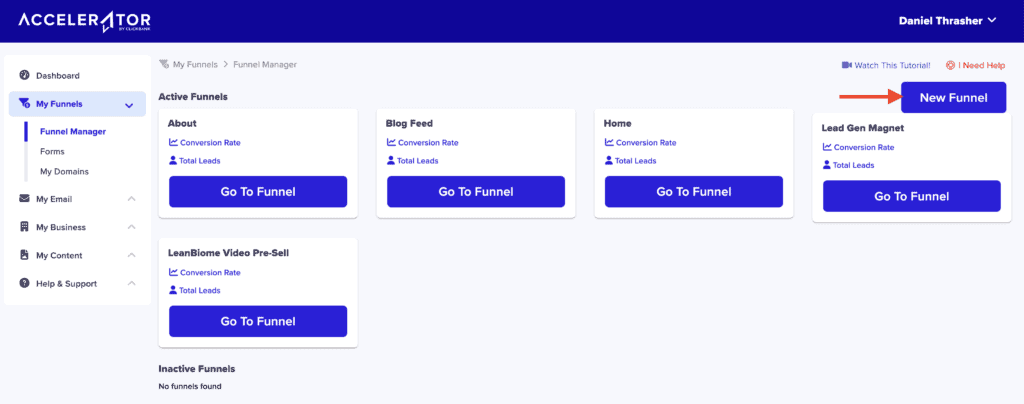
When you click that, the funnel builder will pop up and let you choose the funnel you want.
Step 2: Pick your new funnel type.
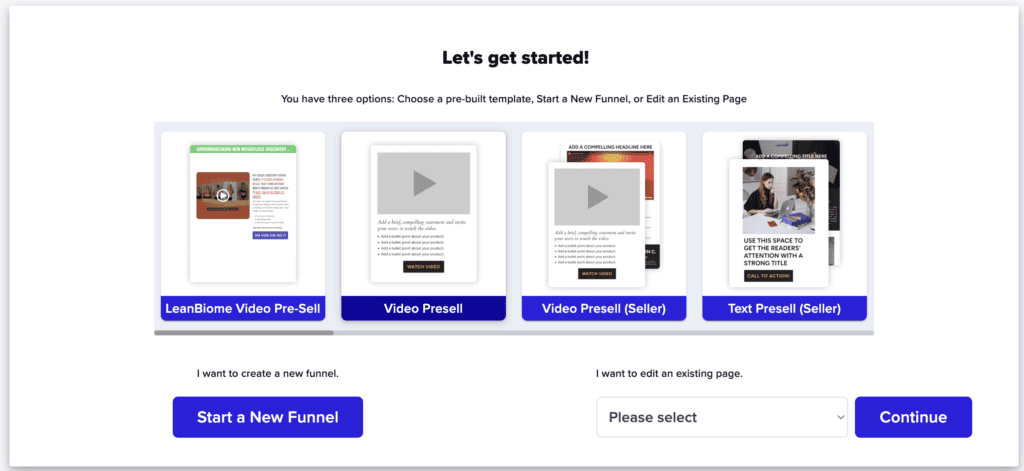
With the funnel builder active, you can choose a pre-built template, start a new funnel from scratch, edit an existing page. Most of the time, you’ll want to just start with one of the pre-built templates, because they’ll get you 90% of the way there to not just the landing page you want to build, but your overall funnel.
In this example, I chose a video pre-sell page template. After I hit “Continue,” Accelerator will generate a new funnel based on my selection!
Step 3: Navigate to your new landing page.
I went with the video presell funnel, so on the “Edit Funnel” screen, I see the Video Presell page element and the CTA button element. I’m going to click “Edit Page” on the video presell box to get to my new landing page and edit it.
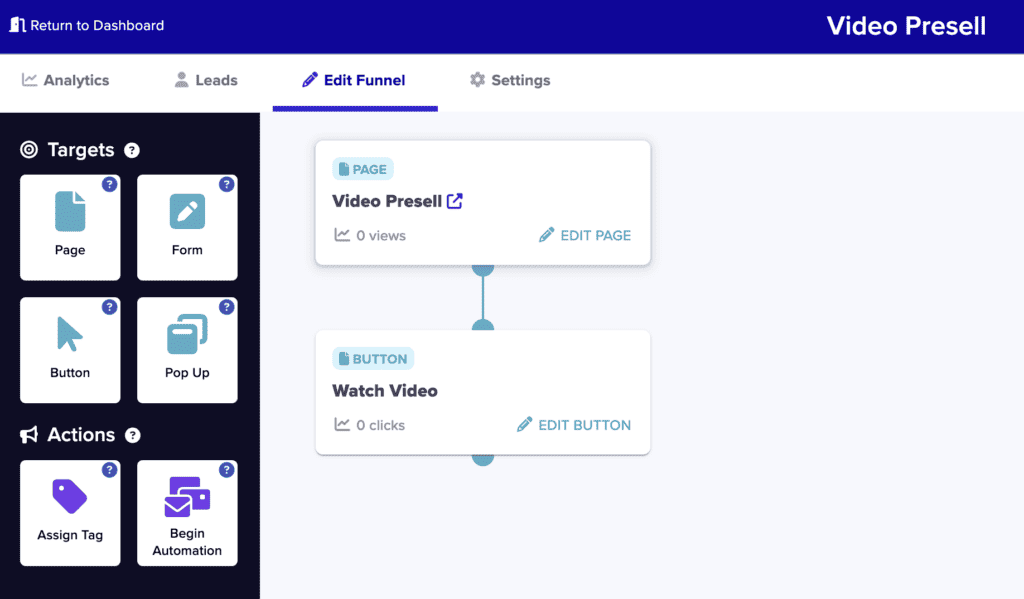
Step 4: Customize your landing page.
By default, the page looks like this:
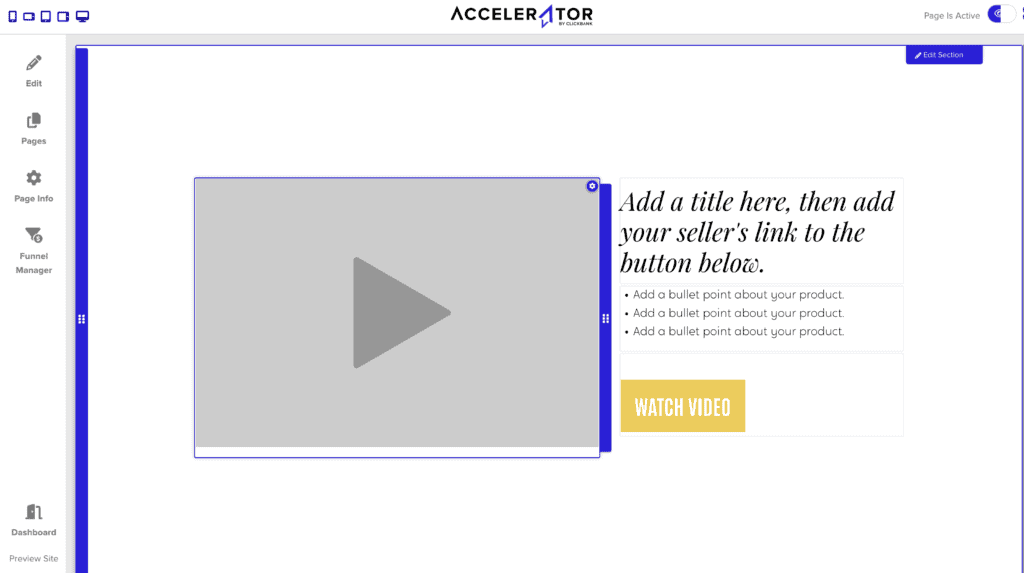
But I’m going to add an image, adjust the copy, and get it ready to promote my chosen offer, which is Brain Training for Dogs (click the link to see what their sales page looks like).
Here’s what the page looked like in the middle of my edits as I was actively making changes.
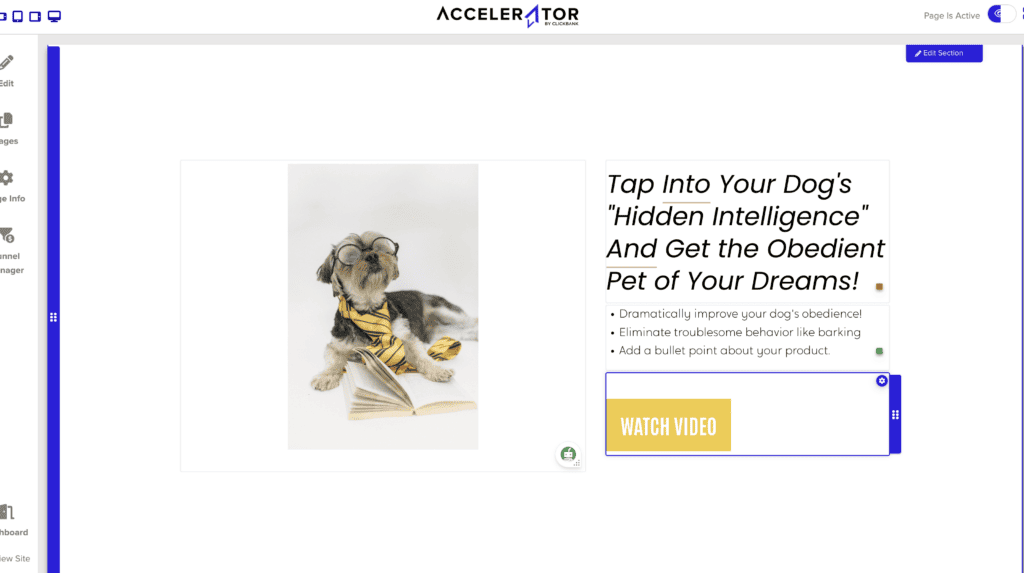
Step 5: Drive traffic to your landing page.
It took me about 15 minutes to build the simple landing page you see below:
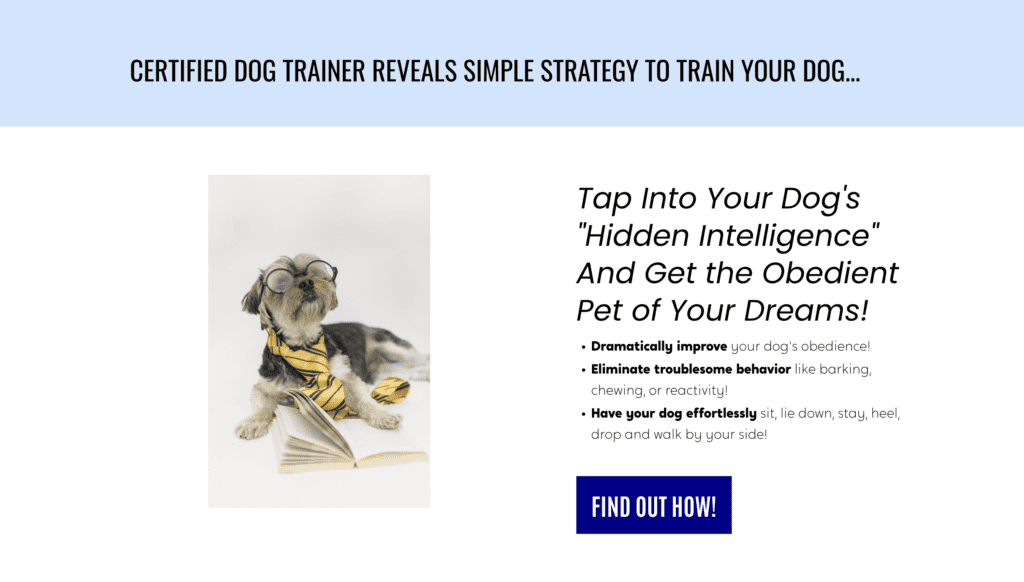
It probably won’t win any awards, but I was able to use Accelerator to build a page that encourages pet owners to click through and learn more about the product. If they go on to purchase the product, I get a commission!
A few additional notes:
- I added my tracking link (hoplink) to the CTA button and to the image. This gives me multiple opportunities to get clicks over to the sales page, and more chances for a sale!
- I decided to add a bar at the top with a headline to provide extra context. The template didn’t come with this, but it was easy to add – I just added a blank module and changed the background color to one that matched the branding on the product’s sales page.
- I started with a video presell template, but halfway through, I realized that the product uses a text sales letter (TSL) instead of a video sales letter (VSL). So, I adapted my landing page on the fly to be more in line with a TSL instead. Super easy!
- This was a VERY simple funnel, but Accelerator also supports more elaborate ones like a lead magnet funnel, complete with several steps that branch out. Fortunately, Accelerator comes with built-in email functionality, so you can manage all of your affiliate marketing campaigns in one place!
Overall, Accelerator made it easy to get a landing page built in just minutes. Obviously, this isn’t everything on your to-do list as an affiliate – you still need to know how to build your funnel, market to your target audience, get traffic to the page, and track the results.
But it really does speed up the process and take a lot of guesswork out of building your landing pages. If you’re at all curious about this funnel builder from ClickBank, feel free to take a closer look at Accelerator here!
Build a Page with Convertri
ClickBank Accelerator is a great option for many affiliates, but for those who want another choice, I also wanted to cover the steps for building a landing page with Convertri, which is one of the fastest-loading landing page builders out there.
Here at ClickBank, we’ve had a long-standing partnership with Convertri, so I can definitely recommend them to affiliates looking to build quality and quick affiliate marketing landing pages!
Setting up a landing page for affiliate marketing using Convertri is very straightforward.
Step 1: Visit Convertri.com and sign up for a free trial.
Step 2: Choose their monthly or annual plan (14-day free trial).
Step 3: Select how you want them to charge you after your trial expires.
Step 4: Choose what you most want to do with Convertri and select affiliate marketing. (Other options are generating leads, selling your products, building websites, and creating pages for clients)
Step 5: Set up your first Convertri subdomain.
Step 6: Convertri will automatically create a demo funnel you can edit – click on My Demo Funnel.
Step 7: Click on My Demo Page to edit your funnel.
Step 8: Drag and drop elements to your fully customizable page.
Step 9: Click save and publish your page.
Convertri, like other good page builders, offers training on how to get the most out of their platform. It might take you a while to build your first landing page, but once you get the hang of it, it becomes a breeze.
Convertri also has a “ClickBank on Convertri” Guide that covers three modules, namely:
- Module 1: Introduction and course roadmap
- Module 2: Choosing your niche and product
- Module 3: Writing the review and setting up your page
Note: If you join Spark by ClickBank, you can open an optional Convertri account at a discounted rate. More about this later.
Examples of Landing Pages
The best-selling product in the animal care and pets category on ClickBank is Brain Training for Dogs.
Here is the affiliate landing page of an affiliate advertising the product on Google Ads.
Overall, the landing page is well-designed. However, the headline needs work. Instead of using an attention-grabbing headline with a strong hook, the headline focuses on the product creator.
The “hook” further down is hard to read and contains an error – it should read “enable it to develop likable behaviors.” And “likable behaviors to make it the kind of pet you’ve always wanted” is not a strong hook.
As previously mentioned, you only have a couple of seconds, at most, to grab a visitor’s attention. If your headline does not convey the right message, they will leave your landing page without reading your copy.
Here is the seller’s sales page:
The sales page has a strong hook that conveys the product will eliminate bad behavior (pain point) and turn your jog into a well-behaved pet which is a strong benefit.
Below is another landing page from an affiliate promoting the same product on her blog but through organic traffic.
The headline does not contain a strong hook, although it is a good, keyword-rich SEO title for the page. Despite the bland headline, she establishes her credentials as a professional dog trainer (part of her target audience), which adds weight to her very comprehensive review.
Throughout her review and in the comments section of her blog, she shares a lot of information with her visitors and is quick to answer their questions.
10 Tips for Creating Effective Landing Pages
Tip #1. Intimately understand your target audience
The better you know your target audience, the better your message will resonate with them and influence them to buy the product or service you are promoting.
Although it is not an absolute requirement, you should ideally be part of your target audience!
For example, if you want to promote products in the dog training niche, you do not necessarily need to own a dog. However, it is easier if you are a dog lover – and even easier if you do own a dog.
Tip #2. Do not let imposter syndrome hold you back
Many new affiliate marketers suffer from imposter syndrome – loosely defined as when you doubt your abilities and feel like a phony. And, unfortunately, it might seep through in your landing page copy.
Ways to combat imposter syndrome and boost your confidence include the following:
- Realize that you are not alone – The majority of super affiliates also doubted themselves when they first started. And ClickBank is here to support you – we want out affiliates to succeed!
- You are going to make mistakes – Nobody is perfect. Learn from your mistakes and move on.
- You do not need to be an expert on your first day as an affiliate – Nobody is born an expert, and most experts are still learning new things all the time.
- Do not overthink things – Affiliate marketing is not rocket science, and your landing page does not have to be perfect. If you want it to be perfect before launching it, you will probably never publish it.
Affiliate marketing can be as easy as buying a product or service (many have free trials) and sharing your experience with your target audience.
Tip #3. Be problem-aware
Avoid focusing on solutions when your target market does not necessarily know they have a problem or are aware of the solution.
Focus on signs/symptoms (pain point) of the problem your visitors can relate to before presenting them with the solution you are promoting.
For example, let’s assume someone suffers from stress (problem) and cannot sleep well at night (symptom). You are promoting a meditation course (solution) that help people suffering from stress sleep better at night (benefit).
You are likely to attract more visitors and build a rapport with them by focusing on the symptom of their problem first.
Tip #4. Focus on helping people
Many new affiliates chase money when they should be chasing solutions to the problems a specific target market is dealing with.
Instead of promoting a helpful product for a lower commission, they may choose to promote a mediocre product that pays them a higher commission.
But ultimately, the more people you help, the more you will earn.
Don’t get me wrong, if you are spending money on ads, you can quickly lose money if you are promoting a low-commission product. However, we don’t recommend that you promote a product simply because it pays a high commission. You might profit from it over the short-term but damage your credibility and alienate your target market in the long run.
Most people who buy a product based on the recommendation of someone else – and then find out it’s not what they expected – will never trust that person again. And if they know that person earned a commission on the sale, it can cause resentment.
When reading through your landing page, visitors should feel you are sincere and want to help them. If they think you prioritize financial gain over their needs, they’re unlikely to click on your affiliate link.
Tip #5. Give visitors a good user experience
The better the user experience you provide, the more likely your visitors will click on your affiliate link.
For example, is it easy for a visitor to contact you? Is it easy for someone to click your affiliate link/button on a mobile device?
Furthermore, try to keep your sentences short and don’t include more than three sentences in a paragraph. Use easy-to-understand words – nobody should need to consult a dictionary to understand the meaning of the words you are using!
In addition, proofread your copy more than once. And if English is not your native language, use a tool like Grammarly.com to avoid spelling and grammar mistakes. You’d be surprised how many people will leave your landing page after only spotting one spelling or grammatical error, because the mistakes represent a lack of credibility or professionalism.
Tip #6. Avoid potential distractions on your landing page
The ultimate goal of an affiliate landing page is to persuade your visitors to perform an action, such as clicking on your affiliate link or subscribing to your email list.
Anything that might distract them from performing these actions should not be part of your landing page.
Common distractions include the following:
- Links to other pages
- Intrusive pop-ups
- Ads
- Meaningless and irrelevant content
Tip #7. Focus on one solution
Studies suggest landing pages with multiple offers get 266% fewer leads than single offer pages.
The more options you give a visitor, the more difficult it becomes for them to make a choice. They would often feel they have to think about it first, and it is unlikely they would ever return to your landing page.
The above does not imply you cannot give a visitor any options, but keep it to the minimum and clearly differentiate between them. Product comparisons, for example, can help visitors make informed decisions without leaving your page to do their own research.
In addition, if you are promoting apples, do not start promoting oranges as well halfway through your copy. For example, if you are promoting a dog training course, stick to dog training. Do not try to promote dog treats, toys for dogs, and dog food on the same landing page.
Tip #8. Maintain synergy with the seller’s landing page
The content on your landing page should tie in with the content on the seller’s landing page. Moving from your affiliate landing page to the seller’s sales page should be a seamless experience for your visitors and a natural progression from being pre-sold to sold.
Visitors should not be surprised or disappointed when they land on the seller’s landing page and find it is not what they expected.
In addition, carefully select any seller you want to promote. Would you buy from them based on the strength of their sales page? If not, walk away. There is no point sending traffic to a poor converting sales page.
Tip #9. Always get a second opinion
Get someone you trust to give you their honest opinion of your landing page. They might spot potential problems and give you helpful suggestions on improving your page.
Here are some questions you might ask them:
- What do you like and dislike about my page design?
- Do you feel the content on my page is relevant and easy to understand?
- Have I done enough to pre-sell you?
- Are there any reasons you won’t click on my affiliate link?
Next, ask them to visit the seller’s sales page and if there are any reasons why they would not buy the product.
Tip #10. It’s not your job to sell the product
As an affiliate marketer, your job is to promote products and guide your visitors in the right direction. Your job is not to sell a product – that is the seller’s job. Your affiliate marketing landing page is not a sales page.
Affiliate Landing Page Wrap-up
Becoming a successful affiliate marketer does not happen overnight. And building effective, high-converting landing pages can be challenging, especially if you follow a trial-and-error approach.
The landing page for affiliate marketing tips and advice I shared in this post will help you get off to a good start. However, if you do not have time to waste and want to flatten the learning curve, you should invest in yourself.
You might significantly boost your conversions by investing in a good landing page builder like ClickBank Accelerator, which comes with plus landing page templates and a custom funnel generator.
Beyond that, you need to know how to think about funnels and utilize them to get the best results. That’s why I recommend you join an affiliate education platform like Spark by ClickBank, which comes with courses on popular traffic sources like SEO, TikTok, and Facebook Ads, along with a comprehensive funnel-building course to help you build a funnel that gets consistent results!







